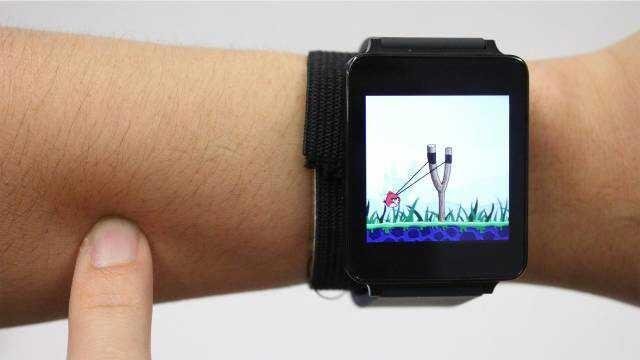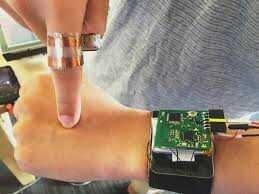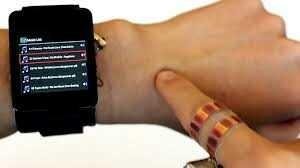The more technologically advanced

The World is getting more and more developed, and technology makers create something that makes people interested and become everyone's dream.

When the emergence of smartwatch, the technology has tried to expand the interaction beyond the confines of the face of small watches. Newly adopted technology developed at Carnegie Mellon University suggests changing the entire forearm into a touchpad.

In a foreign media "News", Called SkinTrack and developed by the Interfaces Interfaces Interface of the Human-Computer Institute, this new system allows continuous touch tracking on the hands and arms. It can also detect touches on discrete locations on the skin, allowing functions similar to buttons or slider controls.
The previous "skin to screen" approach has used flexible layers, interactive textiles and a combination of impractical projectors / cameras. SkinTrack, on the other hand, only requires users to wear special rings, which transmit high-frequency low-energy signals through the skin as the fingers touch or close to the skin surface

The great thing about SkinTrack is that it does not stand out, watches and rings are things people wear every day, "said Yang Zhang, a PhD student at HCII. He will present details of May 10 technology at CHI 2016", Conference Association for Computing Machines on Human Factors in Computing in San Jose, California A video explaining the technology can be seen on YouTube.
"SkinTrack makes it possible to move interactions from screen to arm, giving a much larger interface," says Chris Harrison, an assistant professor at HCII and a research adviser.

Users wear rings that produce high frequency electrical signals. When the fingers approach the skin or touch the skin, the signal spreads through the skin.
By using electrodes that are integrated into the straps, it is possible to determine the source of the electromagnetic wave because its wave phase will vary. Electrodes corresponding to the 12 and 6 hour position of the watch, for example, can detect phase differences that can determine the position of the fingers along the width of the arms; Electrodes at 3 and 9 o'clock positions can determine the position of the fingers along the arms.
This system has some limitations. Keeping the rings on is a challenge. Signals also tend to change when the device is used for a long time, thanks to factors such as sweat and hydration and the fact that the body is moving constantly.

Users wear rings that produce high frequency electrical signals. When the fingers approach the skin or touch the skin, the signal spreads through the skin.
By using electrodes that are integrated into the straps, it is possible to determine the source of the electromagnetic wave because its wave phase will vary. Electrodes corresponding to the 12 and 6 hour position of the watch, for example, can detect phase differences that can determine the position of the fingers along the width of the arms; Electrodes at 3 and 9 o'clock positions can determine the position of the fingers along the arms.
This system has some limitations. Keeping the rings on is a challenge. Signals also tend to change when the device is used for a long time, thanks to factors such as sweat and hydration and the fact that the body is moving constantly.
Reference: Bersiaplah Teknologi Canggih Ini Akan Segera Masuk Kepasaran Indonesia